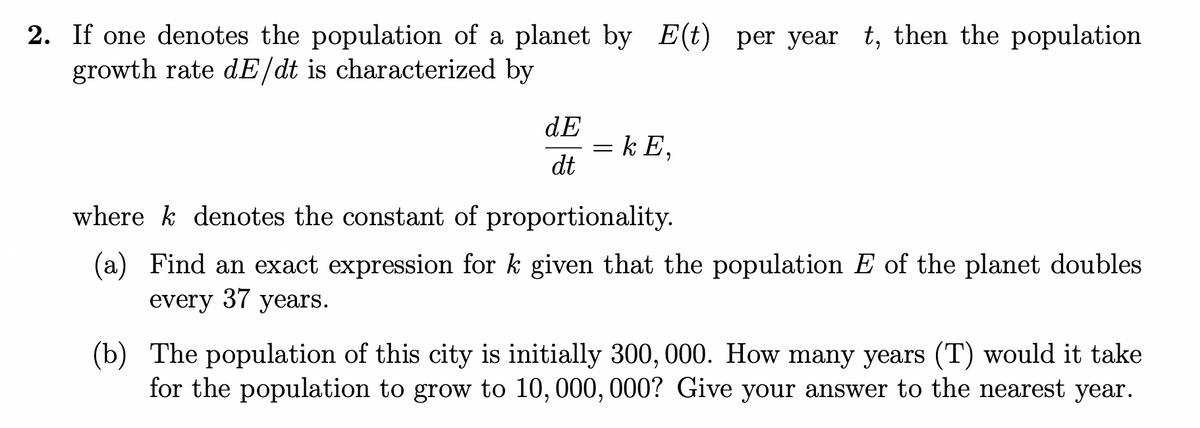2. If one denotes the population of a planet by E(t) per year t, then the population growth rate dE/dt is characterized by dE dt kE, where k denotes the constant of proportionality. (a) Find an exact expression for k given that the population E of the planet doubles every 37 years. (b) The population of this city is initially 300, 000. How many years (T) would it take for the population to grow to 10, 000, 000? Give your answer to the nearest year.
2. If one denotes the population of a planet by E(t) per year t, then the population growth rate dE/dt is characterized by dE dt kE, where k denotes the constant of proportionality. (a) Find an exact expression for k given that the population E of the planet doubles every 37 years. (b) The population of this city is initially 300, 000. How many years (T) would it take for the population to grow to 10, 000, 000? Give your answer to the nearest year.
Algebra & Trigonometry with Analytic Geometry
13th Edition
ISBN:9781133382119
Author:Swokowski
Publisher:Swokowski
Chapter5: Inverse, Exponential, And Logarithmic Functions
Section: Chapter Questions
Problem 18T
Related questions
Question

Transcribed Image Text:2. If one denotes the population of a planet by E(t) per year t, then the population
growth rate dE/dt is characterized by
dE
dt
= kE,
wherek denotes the constant of proportionality.
(a) Find an exact expression for k given that the population E of the planet doubles
every 37 years.
(b) The population of this city is initially 300, 000. How many years (T) would it take
for the population to grow to 10, 000, 000? Give your answer to the nearest year.
Expert Solution
This question has been solved!
Explore an expertly crafted, step-by-step solution for a thorough understanding of key concepts.
Step by step
Solved in 2 steps with 2 images

Recommended textbooks for you

Algebra & Trigonometry with Analytic Geometry
Algebra
ISBN:
9781133382119
Author:
Swokowski
Publisher:
Cengage

Algebra & Trigonometry with Analytic Geometry
Algebra
ISBN:
9781133382119
Author:
Swokowski
Publisher:
Cengage